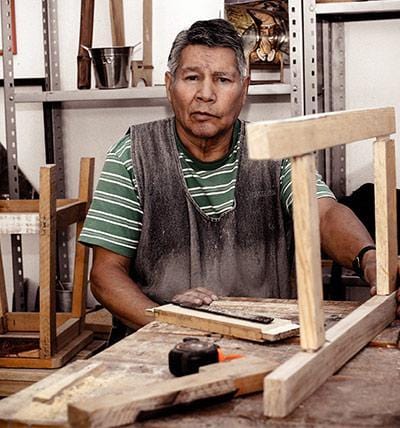Building your own home is a dream come true for many, offering the opportunity to customize every detail to your preferences and lifestyle.
In today's age of rapid technological advancement and sustainable practices, incorporating smart and innovative solutions into your home construction can enhance comfort, efficiency, and sustainability.
This blog post explores some of the latest trends and solutions to consider when building your dream home.
Finding the Right Home Builders
Choosing the right home builder is a critical step in turning your dream home into a reality. Start by researching local builders with a strong reputation for quality craftsmanship, reliability, and customer satisfaction. Whether you are looking for home builders edmonton or in any other place, look for builders with experience in constructing homes similar to your desired style and specifications.
Check their portfolios, read client testimonials, and visit model homes or completed projects to assess their workmanship firsthand.
Verify that the builder is licensed, insured, and adheres to industry standards and building codes. Communication is key, so ensure that the builder listens to your needs, provides transparent pricing and timelines, and communicates effectively throughout the construction process. Ultimately, selecting a reputable and experienced home builder sets the foundation for a successful and stress-free home-building experience.
Smart Home Automation

Smart home technology has revolutionized the way we interact with our living spaces. From controlling lighting and temperature to security systems and entertainment, home automation offers convenience and energy savings. Consider integrating smart thermostats, lighting systems, and appliances that can be controlled remotely via smartphone apps or voice commands. This not only enhances comfort but also reduces energy consumption and utility costs.
Energy-Efficient Design
Designing an energy-efficient home is not only environmentally responsible but also cost-effective in the long run. Incorporate passive solar design principles, such as strategic placement of windows for natural light and heat gain, and proper insulation to minimize heating and cooling needs. Invest in energy-efficient appliances, HVAC systems, and lighting fixtures with high Energy Star ratings to further reduce energy usage and carbon footprint.
Sustainable Materials
Opting for sustainable building materials is a key component of eco-friendly home construction. Choose materials with low environmental impact, such as recycled or reclaimed wood, bamboo flooring, and eco-friendly insulation. Consider using locally sourced materials to reduce transportation emissions and support the local economy. Additionally, look for certifications like LEED (Leadership in Energy and Environmental Design) to ensure that your home meets rigorous sustainability standards.

Water Conservation
Incorporating water-efficient fixtures and systems can significantly reduce water usage and utility bills. Install low-flow toilets, faucets, and showerheads, as well as rainwater harvesting systems for outdoor irrigation. Consider using permeable paving materials in driveways and walkways to reduce stormwater runoff and replenish groundwater. Smart irrigation controllers that adjust watering schedules based on weather conditions can also optimize water conservation.
Indoor Air Quality
Maintaining good indoor air quality is essential for a healthy and comfortable living environment. Choose low-VOC (volatile organic compounds) paints, finishes, and furnishings to minimize indoor air pollution. Install ventilation systems with HEPA filters to remove allergens, pollutants, and odors from the air. Consider incorporating natural ventilation strategies, such as operable windows and skylights, for fresh air circulation and passive cooling.
Universal Design
Universal design focuses on creating homes that are accessible and accommodating for people of all ages and abilities. Incorporate features such as wide doorways and hallways, zero-step entries, lever door handles, and accessible bathroom and kitchen designs. Consider installing smart home technology with voice commands or app controls for lighting, temperature, and security, making the home more user-friendly for individuals with mobility or sensory impairments.

Modular Construction
Modular construction offers a fast, efficient, and cost-effective alternative to traditional home-building methods. Prefabricated modules are constructed off-site in a controlled environment and then assembled on-site, reducing construction time and minimizing waste. Modular homes can also incorporate innovative design elements and customizable features, making them a versatile and sustainable choice for modern homeowners.
Green Roofing
Green roofing is a sustainable solution that adds beauty, insulation, and environmental benefits to your home. Incorporate a living roof with vegetation, such as grasses, plants, or even a rooftop garden. Green roofs provide natural insulation, absorb rainwater, reduce urban heat island effects, and promote biodiversity. They also extend the lifespan of roofing materials and improve energy efficiency by reducing heat gain in summer and heat loss in winter.
Home Office Spaces
With the rise of remote work and telecommuting, dedicated home office spaces have become increasingly important. Designate a quiet, well-lit area with ergonomic furniture, adequate storage, and reliable internet connectivity for productive work sessions. Consider soundproofing walls and floors to minimize distractions and enhance privacy. Incorporate smart technology for video conferencing, task lighting, and climate control to create a comfortable and efficient home office environment.
Outdoor Living Spaces
Outdoor living spaces offer opportunities for relaxation, entertainment, and connection with nature. Design a functional outdoor area with features such as patios, decks, pergolas, fire pits, and outdoor kitchens. Choose durable and weather-resistant materials for outdoor furniture and finishes. Incorporate landscaping elements like native plants, edible gardens, and water features to enhance aesthetics and create a welcoming outdoor retreat for families and guests.
Building your own home is an exciting journey that allows you to create a personalized living space that reflects your lifestyle, values, and priorities. By incorporating smart and innovative solutions such as home automation, energy-efficient design, sustainable materials, water conservation measures, indoor air quality enhancements, universal design features, modular construction, green roofing, home office spaces, and outdoor living areas, you can create a comfortable, efficient, and environmentally responsible home for years to come. Embracing these trends not only adds value and functionality to your home but also contributes to a more sustainable and resilient future.
ABOUT THE AUTHOR
Nurlana Alasgarli
Content Specialist
Nurlana Alasgarli is a professional copywriter with more than 6 years of creative writing experience. Having lived and experienced all over the world, there are many writing genres that Nurlana follows, including nature, arts and crafts and the outdoors. Nurlana brings life to content creation, captivating her readers.






